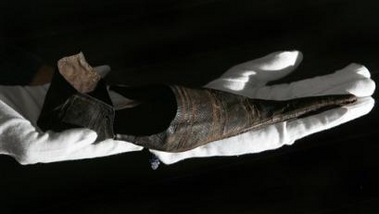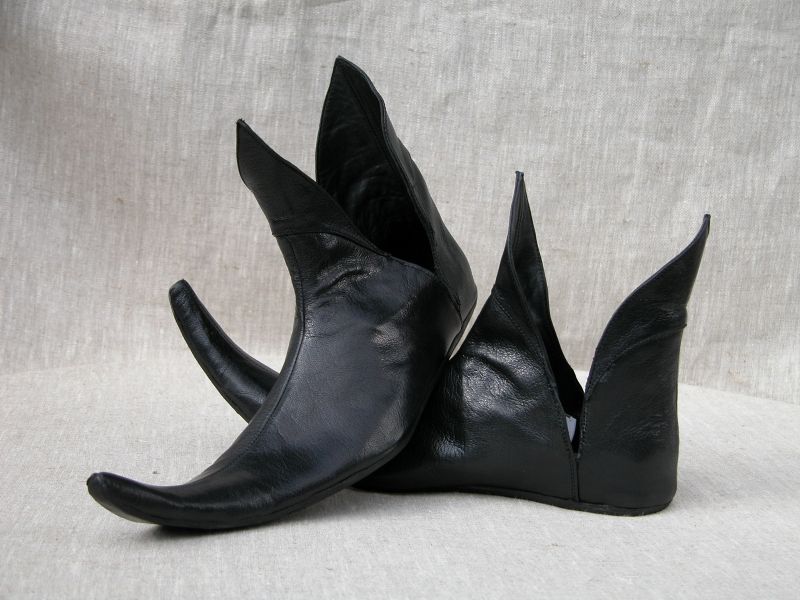Poulaine
Poulaines or crackowes were a style of shoes with extremely long toes very popular in the 15th century. They were so named because the style was thought to have originated in Kraków, then the capital of Poland. They began in the late 14th century and fell from fashion after about 1480-90. They were worn by men and women, but men's were the most extravagantly long.
History
Sometimes the point of the shoe would need support from a whalebone or a string tied to the leg (just below the knee) to stop the point getting in the way when they were walking. (Examples from medieval London have the points stuffed with moss.[1]) Outdoors pattens or sandal-like clogs were usually worn underneath. The Pope and the King Henry IV of England tried to stop this practice. The antiquarian John Stow wrote at the end of the 16th century that:
“In Distar Lane, on the North side thereof, is the Cordwainer's (Shoemaker's) Hall, which company were made a brotherhood or fraternity in the 11th [year of reign] of Henry IV. Of these Cordwainers, I read, that since the 5th [year of reign] of Richard II (when he took to (married) wife Anne, daughter to Veselaus, King of Boheme), by her example the English people had used piked shoes, tied to their knees with silken laces, or chains of silver or gilt, wherefore in the fourth of Edward IV it was ordained and proclaimed, that beaks (the ends) of shoone (shoes) and boots, should not pass the length of two inches, upon pain of cursing by the clergy, and by Parliament to pay 20 shillings for every pair. And every cordwainer that sho[e]d any man or woman on the Sunday (day of rest), to pay 30 shillings.
The thirteenth to fifteenth centuries witnessed the popularity in Europe of the long, pointed poulaine or cracowe, with the point often stiffened and curled up to facilitate walking. Clearly phallic, the poulaine received condemnation in a Papal bull of 1468.

